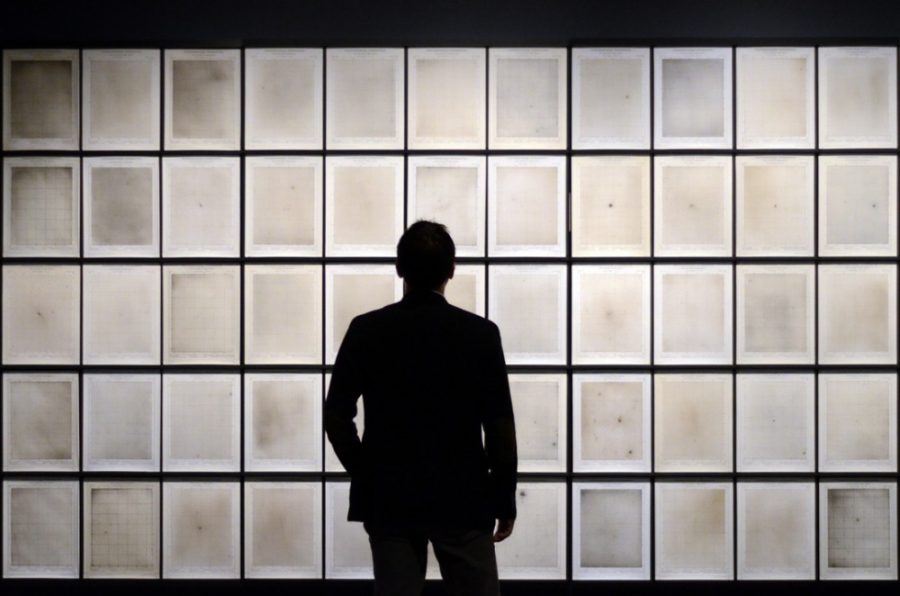Outer space is in the spotlight in the Center for Creative Photography’s newest exhibition, “Astronomical: Photographs of Our Solar System and Beyond.”
The gallery, which opens Saturday, stems from numerous collections. There are pieces owned by university departments and others on loan from private collectors willing to showcase their treasures. Organizations including the Space Imagery Center, Special Collections at the University of Arizona, the AnamorFose Photo Gallery in Belgium and private collector contributed photography. The exhibition is a mix of subject matter, time periods and artists.
Photography has been closely intertwined with astronomy since its inception. For years, astronomers had been observing the sky through telescopes and transcribing what they witnessed through drawings or notes. However, this system was far from ideal. Precise measurements were nearly impossible to make and the process was tedious and difficult. Then came photography.
“Photography and astronomy have had this symbiotic relationship since the introduction of photography,” said Joshua Chuang, the curator of the exhibit. “When photography was invented, it kicked astronomy into high gear.”
With the invention of the camera, the field of astronomy changed forever. Suddenly, astronomers could take pictures of their observations that were more accurate and detailed. The photographs could be taken over periods of time to record minute changes unseen by the human eye. They were astronomers’ permanent records of the night sky.
The advent of photography pushed astronomy to a new level. From that moment on, the two built off of each other, melding scientific observation with art. For decades, astronomers pushed inventors to create more advanced cameras that would allow them to take better photographs and make more precise observations.
“It was astronomers who were the first to really push for digital photography,” said Thomas Fleming, astronomer and senior lecturer at the UA. “Until we developed things like X-ray and radio astronomy, … astronomy was photography.”
The magnitude of this merger and the incredulity of the results it produced changed the way people understood the universe.
“Astronomical” intends to capture this by displaying astronomical photography from over the years.
“Astronomical” begins with an introduction into early astronomical photography with a sequence of pictures titled “Photographische Sternkarten,” which translates into “photographic star maps.” The photos, taken by astronomers Johann Palisa and Max Wolf, observed a small quadrant of the night sky and the ways in which it changed over the course of several years in the first decade of the twentieth century. The photo progression spans an entire wall and is intended to be the first thing visitors see when entering the exhibit. The photos were taken in negative and reveal striking phenomena occurring in the universe around us.
Each of the three subsequent rooms of the gallery take on a specific theme, the first being the moon. From the very first photograph, taken of our celestial neighbor in the late 1800s, to pictures from the various Apollo missions, including the first image of earth-rise from the surface of the moon, this room, the largest of the gallery, is rich with history.
“This is really where the UA comes into play,” Chuang said.
The university has a long history with astronomy and the exploration of outer space and has contributed to some incredible astronomical feats. Since the department’s origins in 1922, serious research and observation of the cosmos has been a staple of the program.
The UA amped up its involvement in lunar research and observation after Gerard Kuiper, the famous NASA astronomer, created the Lunar and Planetary Laboratory as a separate department. Kuiper’s work was integral not only to his program here at the university but to the entire astronomical field. Much of his work will be on display at “Astronomical.”
The next room is dedicated to the rest of the planets in the solar system. From Mercury to Neptune, photos of the planets taken during missions or by telescopic means display the contents of our cosmic neighborhood. Photographs from missions that the UA participated in are also on display, along with a prototype of the camera currently orbiting Mars for the High Resolution Imaging Science Experiment mission and photographs from it.
The final room will be occupied by a projection of the sun, which will be shown as the closing piece of the show.
The exhibit will be open for the rest of the semester and is free to all visitors.
_______________
Follow Victoria Pereira on Twitter.









